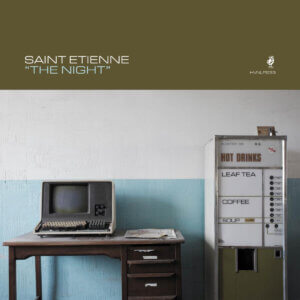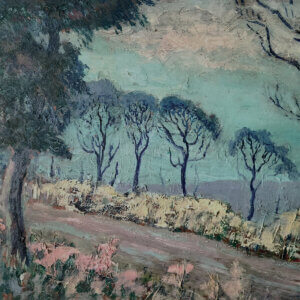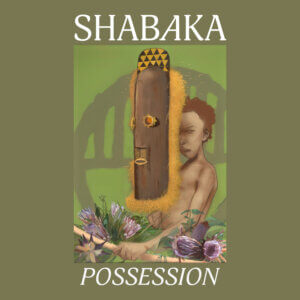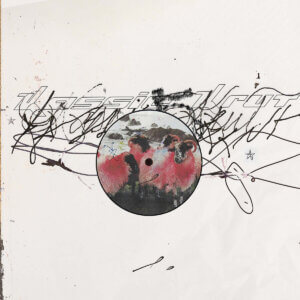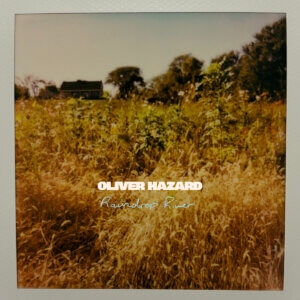Step into the parallel world of Quebec’s FME

It’s Labour Day weekend. The day is Sunday and it’s about 6.30 in the p.m. I am in a social club for seniors called the Loyal Order of the Moose listening to a quartet of dapperly dressed gentlemen sing songs about the Sears-Roebuck catalogue, gingham dresses and the 1927 Palace Theatre fire.
Between tunes the tall, strawberry blond bandleader, sporting a wide-brimmed hat and a suit befitting of a turn-of-the-century Mennonite pastor, asks the audience if there are any amongst us in the employ of the local Noranda mine, the industrial behemoth that gives the Quebec town of Rouyn the post-hyphen part of its name. A scattering of applause and raised hands.
“Are you fine folks fairly paid?” he demands to know, “Or is your hard labour exploited by your so-called betters?”
As a hearty mixture of cheers, boos and laughter assents to the latter, the four musicians onstage launch into a rousing country number dedicated to the plight of the working man — and there’s hardly a soul in the place who isn’t singing along with gusto when it gets to the chorus that goes something like this:
“When the fire comes down/ When the fire comes down/ And the rich man’s made to pay”
You’d be forgiven for thinking that I decided to open my review of this year’s Festival de Musique Émergente in Abitibi-Témiscamingue by telling you about some silly psilocybin-induced dream I had last night, but you’d be wrong. The man in the wide-brimmed hat is none other than Montreal’s foremost country/folk artist Li’l Andy, performing here in the guise of his fictitious alter-ego Hezekiah Procter, alongside a trio of the most talented and versatile musicians you’re likely to see share a stage together this side of 1932. Their set seamlessly blurred the border between music and theatre — with the quartet remaining in character throughout — and though the show was essentially a pastiche of antiquated music styles from a long-bygone era, replete with impeccable barbershop harmonies, sousaphone tuba and some sweetly plucked banjo, it felt as fresh, new and original as anything else at the festival.
More so, in fact. It was truly one of the weekend’s most unique moments. But for all that it was unlike anything else on the program, it seemed to offer up the essence of the FME in microcosm. Gazing round the packed room, a few things are instantly apparent: there is a healthy contingent of Rouyn-Noranda locals in attendance; the age of the audience members ranged from small children in their parents’ arms, through teenagers and twenty-somethings, to the elderly members of L’Ordre Loyal des Mooses in whose linoleum-floored hall we were present. All generations were accounted for. And everyone was having a mighty, whopping good time.
In a town with a resident population numbering fewer than 45,000, the FME’s success largely relies on a huge influx of people from Montreal, across Quebec and beyond. In the wrong hands, run as a money-making machine with no other motive than to line the pockets of a handful of cynical, corporate organizers, a festival like this would run the risk of alienating the town’s year-round inhabitants, resentful of having their home held hostage by a slew of disrespectful out-of-towners who wreak havoc for four days and fuck off as quickly as they appeared. But this couldn’t be farther from the truth. Of all the locals I spoke to, on this and on two previous visits to the fest, no one had a bad word to say about it. I found people in Rouyn to be, well, really nice, pretty much without exception, and they seemed uniformly thrilled to host a festival that brings their town to life but doesn’t take it over and alter it entirely. It feels as much a part of the town’s DNA as the copper smelter that dominates its skyline.
The FME is aimed at everyone: young and old, locals and visitors alike. It is an inclusive ‘open arms’ event whose organizers seem intent on making sure no one gets left out and the age range of the crowd at the Li’l Andy show was very much reflective of the festival as a whole. Sure, there was always plenty of potential for hedonistic debauchery at the late night concerts and afterparties that went on into the wee hours of the morning, but the afternoon programming also boasted plenty of family friendly options and cinq-à-sept events geared towards more sensible crowds as well, plenty of whom had kids in tow. On one such occasion, at the Guingette Chez Edmond, an outdoor stage on the shores of Lake Osisko, festivalgoers basked in the rays of the summer sun to the shimmering, melodic dream pop of Montreal via Vancouver band Grand Eugène, accompanied by the somewhat surreal sight of small children wandering through the audience with cloudy puffs of blue candy floss bigger than their own heads.
FME 2024 — now in its 22nd year — as always, boasted an impressive range of diverse artists playing a plethora of eclectic venues over the course of the weekend. As well as a seniors’ community hall, acts could be seen performing in spaces such as a converted church, an old ballroom bedecked with chandeliers and mirrorballs, a sweaty dive bar, a swanky cocktail bar, the forecourt of an AutoPro garage, as well as a number of cafés, boutiques and pop-up outdoor stages dotted all across town.
One of the most banging shows was at Bar Pazzo on Saturday night, an event space lit with so much blacklight it felt like being a tropical fish in the Ripley’s Aquarium in Toronto. BoBo OnO, a solo performer who if his Bandcamp profile is to be believed is the illegitimate son of Yoko Ono (abandoned by his mother up in Lac St-Jean around 40 years ago, no less…) joined forces with Les Deuxluxes, Barry Paquin Roberge et al to form a psychedelic funk rock monster whose lick-laden bass grooves took an already amped-up crowd to the point of almost electric hysteria. The crowd was so dense there was hardly enough space to breathe, but somehow everyone found enough room to dance. As the room hit peak euphoria and the BoBo OnO set concluded, hardly had they left the stage when a masked duo dressed in black and white polka dot mummer’s costumes emerged. Initially it wasn’t clear if this was the next band or the surreal, tripping-balls coda of the BoBo OnO set. One half of the duo had an inverted pyramid for a head, a long Pinocchio nose and wielded a double-neck guitar put to microtonal purposes; the other had a head shaped like a fire hydrant with a dangling phallic appendage attached to it, who went straight to the drumkit and proceeded to bash out rhythms by turns stomping, angular, swaggering. A night that was already somewhat on the hazy side suddenly became hallucinatory and oneiric. This was Saguenay band Angine de Poitrine and their set segued so perfectly on from BoBo OnO that it felt like a single performance, slithering into the subaqueous glow of the Pazzo to surreal, lysergic and pantomimic effect. It got altogether wild indeed.
Other highlights of the weekend included Montreal indie rock outfit The Wesleys, of new label Petit Village Records, who played to a packed-out Paramount; Mossaï Mossaï from Tours, France, whose ethereal mélange of post-rock, post-punk and shoegaze veered at times into edgier, noisier industrial terrority, the melodies and shifting soundscapes anchored in soulful and husky, Brigitte Fontaine-esque vocals; Brussels quintet Ada Oda rocked the Cabaret de la Dernière Chance so hard the floorboards almost shook themselves loose, their catchy Italian-language indie pop delivered with a sense of theatre and punk rock vitality that sent their thrashing fans into a frenzy; and last but not least, for the festival’s big closing show on Sunday, Montreal ‘groove machine’ The Brooks put on a virtuoso performance that ended the festival on a note of uplifting, humbling joy. Alan Prater, the ensemble’s lead vocalist, trombonist and a consummate all-round performer, held the audience in the palm of his hand for almost an hour and a half, his voice oscillating effortlessly from baritone to falsetto when he wasn’t blowing our socks off with intermittent trombone solos. We were treated to all kinds of solos throughout the set: trumpet, sax, drums, guitar, all held down by bassist and co-founder Alexandre Lapointe whose musical abilities were nothing short of superhuman. It was staggering, awe-inspiring.
The FME has evolved over the years into Quebec’s foremost festival for emerging musical talent, but while it might not have the kind of stellar lineup you’d hope for in your wildest dreams, what it lacks in A-List it more than makes up for in variety, surprise and charm. There’s so much going on, you never know what’s around the next street corner. When I got bored of PyPy’s predictable histrionics at the Cabaret this year, I wandered out back, through a parking lot, and happened upon the tattooed head of Souldia rapping on the main stage to a crowd that must have been a thousand strong. When Mexico City psych poppers Petite Amie proved to be a bit of a damp squib I darted over to the Agora des Arts to catch the last half of Avec Pas D’Casque and still made it back to the Paramount in time for The Brooks. Ditching something else for a lunch date, I wandered into a local hip-hop act at the AutoPro performing in a miasma of weed smoke, aftershave and diesel fumes.
What makes the FME so special — and why, since its inaugural event in 2003, so many music lovers are prepared to take the long, long journey to get to it — is that it offers an atmosphere and an experience that most other festivals don’t, can’t or won’t. It is the perfect counterpoint to the blasé culture of big city music fans spoiled by the abundance of bands you can see nearly every night of the week, not to mention a welcome antidote to the price-gouging of big festivals and major corporate venues that get you in and bleed you dry with plastic cups of overpriced Coors Light and absurdly expensive Lesters hotdogs. Where your typical festival sees you herded like cattle into the wire-fenced pens of the event grounds by phalanges of misanthropic security guards who pat you down and rifle through your bag’s contents, at the FME the security presence is minimal and there are surprisingly few police about too. It is a festival that treats its audience like adults and the result is one of mutual respect: there is no trouble to speak of, no violence or vandalism (not that I heard about anyway) and although everyone is having a fantastic time, getting drunk and no doubt consuming their fair share of chems and psychedelics as well, it’s rare you see anyone completely wasted — say, passed out at a bus stop with no shoes on, covered in the remains of a poutine. Compare this to getting the metro back from Osheaga at 1 a.m. on the Saturday morning and you’ll find the contrast very, very stark indeed.
You might say it’s the parallel universe of festivals: a place where everyone is friendly, no one is out to rip you off and the hottest up-and-coming artist is a 1920’s vaudeville act whose big hit is ‘I See Jesus Comin’ Down The Road’. And for all that the Festival de Musique Émergente en Abitibi-Témiscamingue might be a bit of a mouthful for some, trust me, these words are worth adding to your summer festival lexicon post haste, tout de suite. This is one music fan who can’t wait to go back.
Buy tickets for FME 2025 HERE
Latest Reviews
Tracks
Related
Sorry, we couldn't find any posts. Please try a different search.
Advertisement
Looking for something new to listen to?
Sign up to our all-new newsletter for top-notch reviews, news, videos and playlists.
